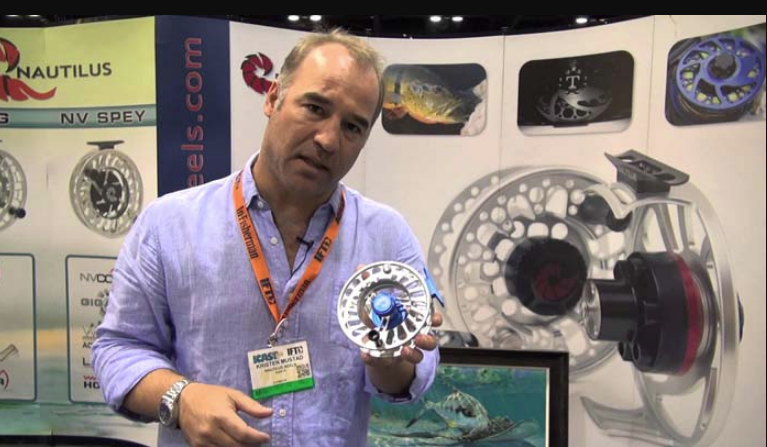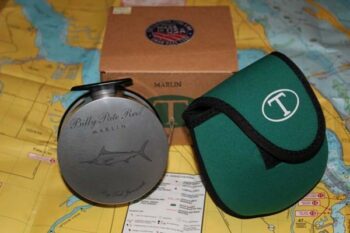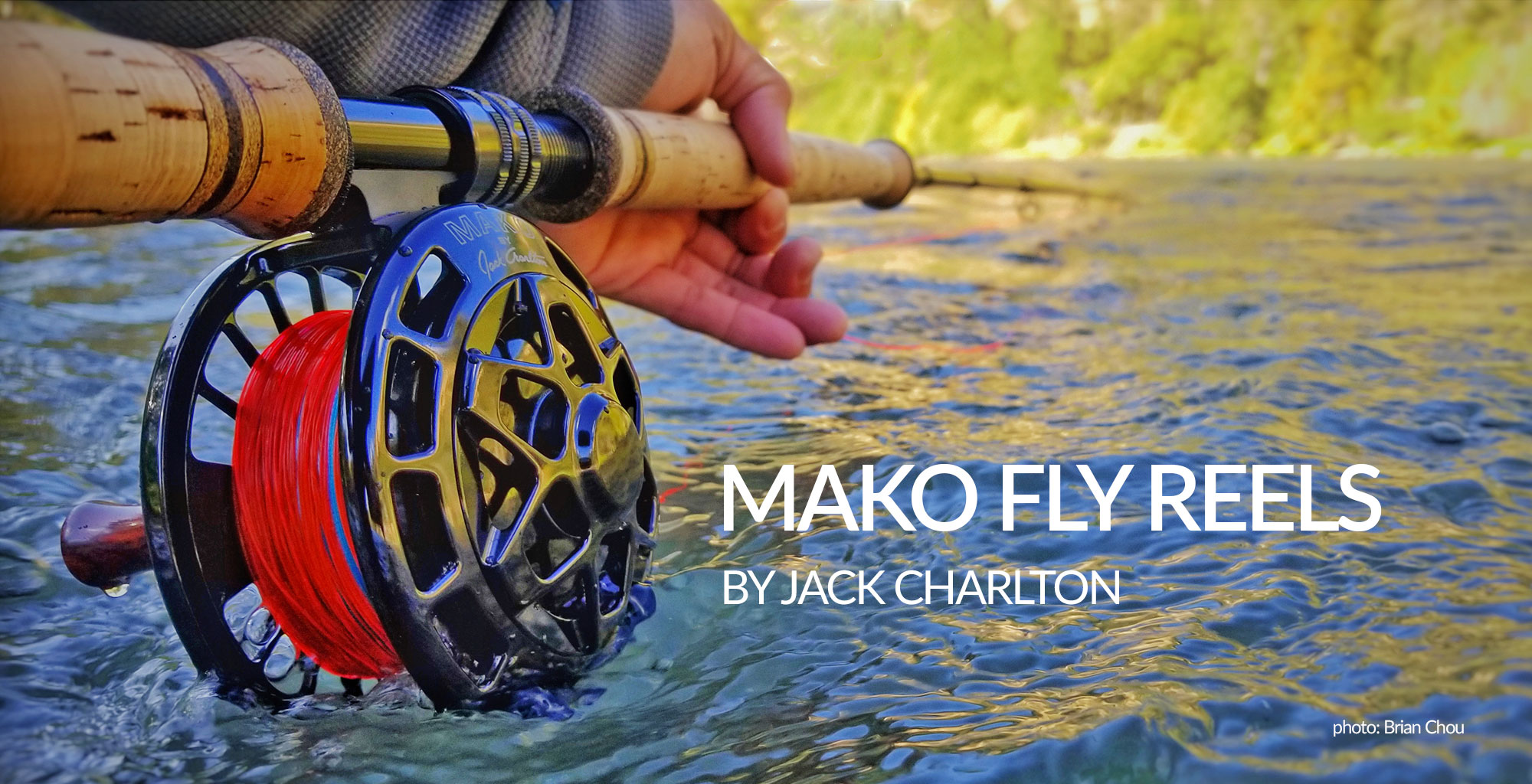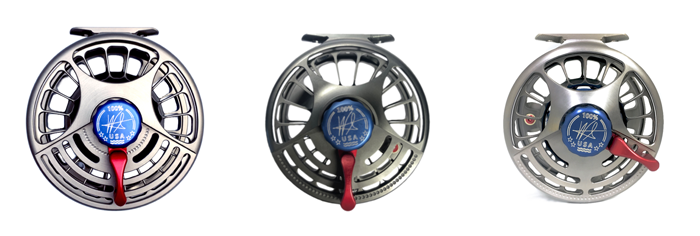
Nautilus Reels owner Kristen Mustad [above] is one of only a few fly reel makers that are today’s go-to for big game fish like tarpon, sharks, and billfish. Mako is another along with upstart Seigler Reels. There are others like Ted Juracsik, who changed fly fishing forever with his Billy Pate Tarpon Reel. The Florida Keys became Mecca for saltwater fly fishing.
Buying a fly reel should be a big deal, whether fly fishing for crappie or billfish
By TJ Douglas
The first question is, what are you fishing for? Stocked trout and a 350# black marlin must meet different fly reel demands.
To some fly fishers, a fly reel has to express craftsmanship backed up by precision engineering of high-end materials and components, and most importantly, it must have a superior drag system design.

The Billy Pate Tarpon Reel helped launch Ted Jurascik’s career at Tibor Reels. It made saltwater fish a fly fishers possibility – saltwater fly fishing would slowly explode at its epicenter, the Florida Keys.
A fly reel kinda says a lot about synonym you
A good fly reel, to many anglers, has the same importance as their rifle or shotgun – something expected to last a lifetime and a pleasure to hold.
Buying a fly reel that lasts and has a design that identifies your angling personality takes only two commitments. You’re willing to do the research and willing to spend money. Top billfish reels start at around $1,300 and go to around $2,400. The list of good, durable big-game fly reels is short.
A $150 begins buying a very good, lifelong fly reel for trout 3/4-weight and goes well beyond $300

Jake Jordan created a marlin fishery around the performance of this reel.
Brand Names are always worth a look
Brand names are important and reliable choices for trout reels, and they are generally reliable up to gamefish of around 15/20 plus pounds, depending on the species.
The number of cheap reels marketed in the US, Europe, Argentina, and Canada makes choosing any of them a gamble – one I regret having once made – the mistake was obvious.
A fly reel series made in China, Korea, and other Asian countries can be excellent in the trout and riverine bass league, but it is largely unpredictable unless it is Korean when the bigger game fish are hooked.
Fish less, gamble a little?
Anglers who take care of their fly fishing equipment and only fish for a few days for home waters bass or trout can selectively buy decent reels for less than previously mentioned. However, if durability and the ability to take a beating are required, that can be a mistake.
NOTE: Although a fly shop probably won’t have every fly reel inventoried, they chose brands that won’t cause post-sale issues with breakdowns and returns. Your local fly shop is an excellent source of reel knowledge.

With the Seigler Lever Drag Fly Reels [$750 to $2,000], the drag plates are pressed directly against the side of the line spool. The drag plate is the size of the side of the spool – distributing pressure across a large surface. This pressure against the spool creates friction, which applies drag to the spool. When the fish pulls hard enough, the spool slips and pays out the line; by pushing the drag lever forward, the drag plate is moved up tighter against the side of the spool. The further the lever is moved forward, the more pressure is applied to the spool with the drag plate. By pulling the drag lever back, the tension is relieved. With the lever pulled back, the reel will still have minimal contact of a quarter-pound or such so as not to free the spool completely.
What causes reel failures
If the drag is set at one pound but has a one—or two-second freeze at startup that exceeds the tippet’s pound test, it could be game over.
However, if the connection to the backing is a Bimini and the fly line has enough elasticity, the leader may hold for a time. Still, the leader may have been pound test compromised by the startup momentary freeze. That 20-pound test tippet is now something less.

If you have this guy’s trout or salmon reel [BOGDAN], it’s worth anywhere from $500 to $6,000. Otherwise, buy a good brand-name reel for your trout and riverine bass. Stanley Bogdan, maker of much-coveted fly feels, died at 92 in March of 2011,
Many so-called big game reels do not have durable drag systems
Drag failure usually means that an inferior drag system starts to pulse during a gamefish run. For example, the reel drag is purposely set to tax a tarpon or sailfish into submission as quickly as possible. But when the drag starts failing, it will generally begin to pulse. When that strain on the tippet exceeds the breaking strength, the tarpon or sailfish is broken off. Especially if the angler is IGFA-rigged, the leader construct has a ceiling of lengths and tippet pound test strength of 20 pounds or less.
Failure at any stage of the drag setting can occur with inferior fly reels. Several-second pulses might end a record catch of steelhead, salmon, tarpon, shark, billfish – even a nice Patagonia rainbow or New Zealand brown trout.

Tarpon [Megalops atlanticus] illustration by Thom Glace.
Angry at the gunnels
More than a few of those freeze-ups happen right at the moment of capture—when the game fish panics, seeing the boat’s gunnel and bolts, and takes off on a surprisingly powerful run.
A reel freezing up at the at the capture point, when the fish makes that ‘at the gunnels’ last run, is like missing a two-foot putt at open championship. A loss like that has been known to drive anglers and golfers into a psychiatrist’s waiting room.






